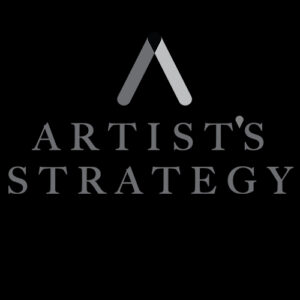
Our hustle culture teaches us that success is measured by how many tasks we check off our to-do list or how many goals we can reach in a given week or month. This achievement-centric perspective isn’t really surprising: When we rack up small successes, when we achieve, one after the other, the tangible milestones we set up for ourselves, we tend to feel a hell of a lot better. It’s about identifying a challenge, working hard to overcome it, and celebrating when we cross the finish line. Linear progress, especially the kind that can be counted up and quantified, feels immediately satisfying and effective.
But what happens when we don’t hit one of those goals? It’s easy to fall off the work wagon, even after a solid streak of success. After all, life happens: Weddings, sickness, moments of inspiration followed by moments of anything but. Auditions, rehearsals, and new career opportunities all have the power to veer us away from our immediate plans and—often rightfully—shift our attention to new and often unexpected priorities.
The old adage goes: “You make a plan and God laughs.” But simply realizing that our short-term goals are subject to the whims and fancies of the wider universe is not reassuring in and of itself. We need a different and more reliable framework for consistent and sustainable motivation. This is where the power of simple directionality comes in.
Why? Because you will inevitably miss one of those goals, break your streak, and beat yourself up about it. But if instead you were to zoom out far enough on this scatterplot of goals, you might identify clusters and see them trending in a general direction. Perhaps you could even take a metaphorical pencil and draw a straight line to connect them. Sure, some goals might fall on one side of the line or another, but generally speaking they will straddle that line and cohere on an intentional path.
This is what thinking directionally is all about. Direction acts as a pathway forward, so if and when you miss one of your near-term goals, you feel grounded on a longer and more intentional journey instead of feeling immediately demoralized and lost. In other words, instead of placing immense value in each of your independent, short-term efforts, think about how they add up to something bigger, more coherent, and—you got it—directional.
It’s precisely these short-term and tactical goals that cluster together to reveal the broader direction. Directionality cannot exist without these individual goals coming together to inform the potential path ahead. But instead of placing stock in each of those goals as separate units, we zoom out, identify the through line, and push ourselves to focus on where it’s all leading to.
There are a number of advantages a directional approach has over a non-stop, goal-centric approach. First, it relieves us of unnecessary feelings of failure and defeat. Ever break your Duolingo streak? It sucks. But instead of dwelling on a single missed session, think about the direction you are heading: toward eventual mastery of Spanish, Korean, or whatever language you’ve chosen to take up.
Another advantage is the directional approach’s ability to stave off procrastination. What happens when we achieve a short-term goal? Success! But focusing only on short-term goals means we have to pick up somewhere else, starting at the next short-term goal and moving through the process all over again. This start-and-stop rhythm is typical when we laser focus on the individual goals in front of us: We tackle one, celebrate, reorient, brace for another challenge, and begin the subsequent task.
When you don’t feel like doing the work, or when your work feels disjointed and disconnected, having direction does it for you. With so many individual goals, it’s easy to feel overwhelmed or disoriented. But seeing the bigger picture—the straight line that runs through all of your separate initiatives—provides a sense of centrifugal motion (perpetual bliss). Suddenly, you’re not working on dozens of unrelated individual objectives (Whac-a-Mole anyone?) but moving along the path toward an ultimate destination.
But assessing those goals in aggregate and charting out their high-level direction will keep you in the game for the long haul. This is why we at Artist’s Strategy don’t waste too much time on immediate concerns, or your goals for this week or next, but instead on what we want years out and how that direction helps to inform the smaller, more immediate tasks. Besides, those weekly goals stemming from larger wants will feel more achievable, more purposeful, and more consistently and reliably attainable. And that’s a win in our book.
Why the Best Self-Producers Live to Multi-Task
Go Ahead, Give Yourself Some Credit


Artist's Strategy offers artists the opportunity to strategize and create tactical next steps towards a successful, fulfilling career. Based on tested business principles, Artist's Strategy helps you design a tangible path towards a sustainable future. Incorporating and using the basic tenets of a healthy business, we will help you set a one, three or five-year-plan that will work for you and keep you on track to seeing real results. With Artist's Strategy, you will work alongside founder Joshua Morgan to identify the strengths and opportunities of your business and learn more about how to stabilize and grow. How long and how frequently you work with Artist's Strategy depends on your individual needs and resources. Contact us to discuss a plan that could work for you.
Read Full Profile© 2021 TheatreArtLife. All rights reserved.

Thank you so much for reading, but you have now reached your free article limit for this month.
Our contributors are currently writing more articles for you to enjoy.
To keep reading, all you have to do is become a subscriber and then you can read unlimited articles anytime.
Your investment will help us continue to ignite connections across the globe in live entertainment and build this community for industry professionals.